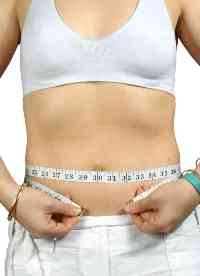
The Female Athlete
 How do think we are hurting female athletes with exercise?
How do think we are hurting female athletes with exercise?
Get concerned with the diagnoses they receive which may reduce the propensity of women to exercise – numerous health benefits of women exercising. World Health Organisation recommends 150 minutes of exercise per week and at least 2 sessions to be whole body strengthening. Decreased risk of cancer, heart disease, breast cancer, diabetes and strokes, etc associated with exercising along with increased bone density and reduced risk of falling as they get older.
Social aspect of exercise – when women are not exercising they can miss out on benefits of social interactions. We can hurt women with our recommendations eg take them away from their support networks. Gyms with creches may be the only time that women have for them. If we say you shouldn’t do that then not only taking away physical activity but the social interactions, stress relief and emotional support. Can also impact on the quality of their sleep – so important for new mums who are likely to be sleep deprived in the first place. Post partum exercise can be an important intervention for those who are suffering from depression so any recommendations to stop women exercising needs to be based on strong evidence.
How should health care professionals think differently about female athletes?
(nb female athlete is anyone who is partaking in moderate or higher activity). Let women do what they want to do with respect to exercise in a BPS way. Offhand remarks can become a huge weight on women’s so need to be considerate of their words. Words like pelvic instability, SI joint instability, lower back instability etc can be extremely harmful. Just demonstrate how to do activities differently can enable women to carry on doing what they want to do.
Other harmful phrases include alignment, poor posture, forward head posture, anterior/posterior pelvic tilt – they all heap burden on women. Important to acknowledge their feelings so that women feel heard and understood and then have a discussion about what that really means.
Advice for post partum women – what questions should they be asking?
Key messages – get a pelvic physio consultation if suffering from pelvic floor issues and secondly, how you do the exercise is more important than what exercise you do. For example, doing a specific exercise in one way may make you feel awful about your symptoms whilst doing it in another way would make you feel great. Often we don’t know why things happen mechanistically but we do know if you are heard by a “nice therapist” will increase your chances are feeling better. If someone is deadest trying to get you to do something and you are not getting better then go and see someone else.
What does the research tell us?
All very broad. If you haven’t had a baby then there is no difference in post partum issues if walking or cross fit is your main exercise. Stress loaded urinary incompetence is affected by impact activities such as running, jumping, etc. Surprising it appears as though if you have a diastasis then in the first year you are slightly less likely to suffer from pelvic floor dysfunction cf if you haven’t had a diastasis. So much in the research that we don’t know.
Diastasis Recti
So many women see it as a problem and are we feeding into that? What is normal? Most women will have a diastasis. Don’t have a good mechanism how the diastasis recovers.
We do know that how you hold yourself and putting pressure down into abdomen is not good for diastasis.
No rhyme or reason on how we as health care professionals can impact on diastasis. Get moving as much as possible Be mindful of pressure control (but not fanatical).